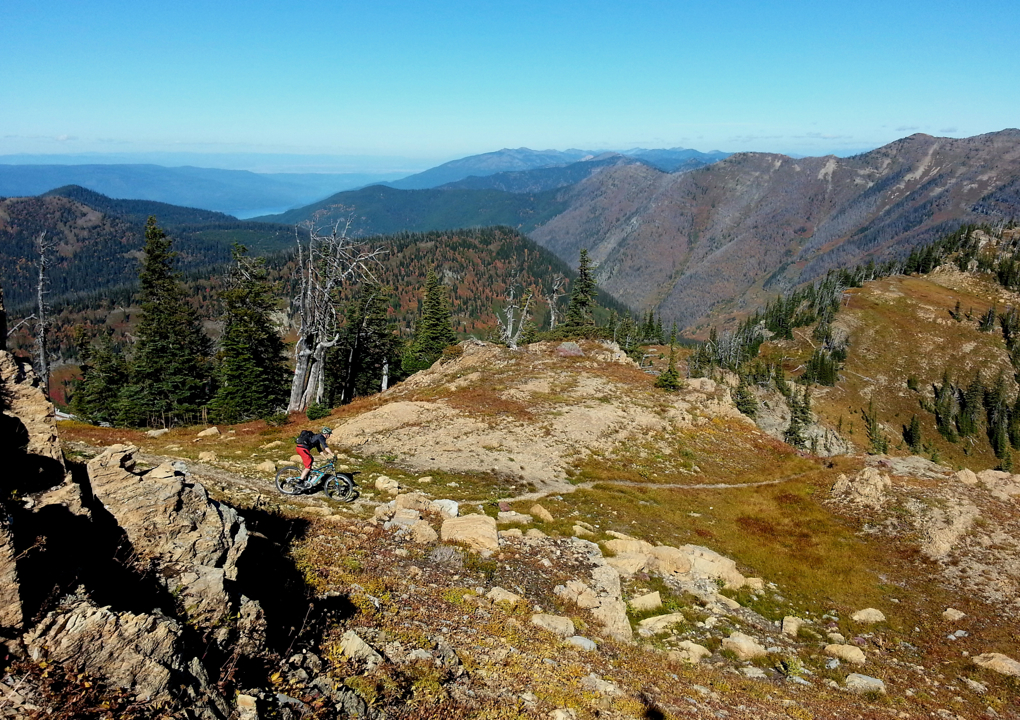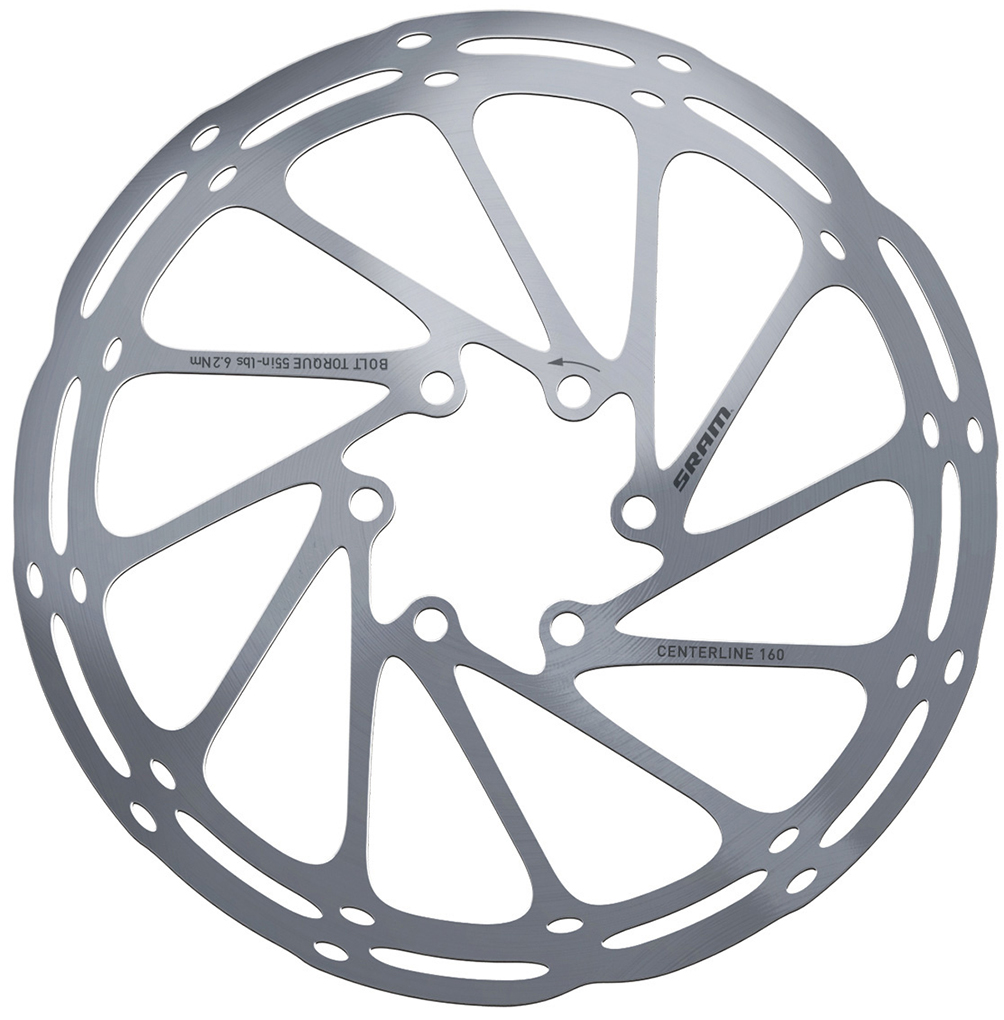Power
Judging the power of a brake is a bit subjective; I’m really just going off of feel. Some brakes are clearly more powerful than others, but when comparing relatively similar brakes, it can be tough to say which one is ultimately more powerful, especially since I’m generally testing brakes on different bikes.
The Guides certainly aren’t low on power. I’d say they’re a bit more powerful than the Elixir 9 Trails, and very similar in power to the current crop of Shimanos. A good indicator that the Guides are powerful is that they’re coming spec’d on more than a few 2015 DH bikes.
I’d say that Shimanos still feel a hair more powerful, but it’s a very thin hair. And a lot of it might come down to when the power comes on: the Shimanos feel a bit more grabby, whereas the power on the Guides comes on a bit more progressively, presumably in large part due to the Swinglink mechanism. The long and short of it is that, in terms of power, the Guides are very much on par with any other stoppers on the market, with the exception of some of the dedicated DH brakes.

Modulation
Modulation is particularly important in any good brake. Lots of power is great, but it doesn’t do you much good if the brakes lack modulation; that just leads to lots of skidding. I’ve ridden some brakes that were unbelievably powerful, but they were frustrating to ride because there wasn’t any ground between not braking at all and fully locked up.
Avid brakes have had a reputation for good modulation, and the Guide continues this trend. The power comes on quickly enough so that you can slow yourself down from speed efficiently, but there’s enough modulation that the power delivery never feels abrupt.
SRAM really touts the modulation afforded by the Swinglink design in the lever, and I’d say that their claims are legit. To some extent, older Avids had good modulation just because they were a bit low on power; it’s relatively easy to make a low powered brake that modulates well. The Guides, on the other hand, have both good power and good modulation, much of which seems to come as a result of the cam mechanism that SRAM built into the lever.
The Levers
My problem with the Guide brakes doesn’t have to do with their power or their modulation, but that I dislike the shape of the lever. Before I wade into this, I should be clear that brakes are a matter of personal preference, and lots of people set up their brakes completely differently than I do.
My main problem with the Guide levers is that they pull way to close to the bar for my preference. I usually set up my brakes so that they don’t come all that close to the bar—the pad contact point is pretty far out.
On the Guides, I’m running both the contact point and the reach all the way out, and they’re still too close for me. I’ve bled them a number of times to try to fix this issue, and I’ve even gotten a bit creative with trying to force extra fluid into the system to try to make the levers pull less. But no luck.
When I position the levers on the bar where I would normally put them, then pull the brake with one finger, the tip of the lever hits my middle finger. I re-positioned the lever substantially inboard on the handlebar, which solved the problem of hitting my knuckle, but now my shift lever is annoyingly far away.
I’ve also found that I get a lot of hand cramping with these levers, which I again attribute to the lever shape. I’ve tried a number of different lever positions, none have helped. I can’t say I’ve ever had this problem with any other brake lever, and I think this really comes down to the fact that the levers pull much closer to the bar than I’m used to.
To be perfectly honest, all of this really surprised me. I certainly have my preferences about how to set up brake levers, but I’ve not come across another brake lever than I really didn’t like since the old skinny Hayes levers. In the last couple months, I’ve spent time on Avid Elixirs and Codes; Shimano Zee, Saint, and SLXs; and Formula T1s, all of which felt fine (at least in terms of lever shape). Sure, I like some better than others, but I could happily ride any of those and think nothing of it. But every time I get back on the Guides, I’m reminded that the levers just feel weird to me.
In trying to wrap my head around this, I can only point to two things: First, the Guides have a somewhat soft lever feel. By that I mean once the pads contact, I can continue to pull the lever quite a ways; there’s not really a firm stop, and the resistance doesn’t build very quickly.
While this certainly helps the brake modulate well, it also means that, even when I have the contact and reach adjusted all the way out, when I start yanking on the lever, it still ends up being pretty close to the bar.
Second, the Guide lever blades appear to be fairly short—along the lines of Shimano offerings. But looks are deceiving. When comparing the distance from the handlebar clamp to the tip of the lever, the Guides are still quite long. They’re quite a bit longer than the Shimanos, and they’re about the same length as the Elixirs.
But the distance from the pivot to the lever tip is fairly short, like a Shimano. Here’s a picture of the Guide levers next to some other brakes (click to enlarge):

In sum, given the way I like to set up my brake levers, I didn’t really like the ergonomics of the Guide. But many riders will likely feel differently, and if you fall into that category, then the Guides will serve you well.
Performance Issues / Durability
I’ve been on the Guides for over two months now, and they’re going strong and haven’t required a bleed (though I did bleed them a couple times to try to get the levers to pull less, as discussed above). I haven’t noticed any of the inconsistent pull issues that were fairly common with taperbore Avids.
I’ve done a number of long descents that have gotten the brakes good and hot, and the Guides fared reasonably well.

I noticed a little bit of fade, but it wasn’t terrible, and it only happened on the longest, hottest descents. I’d also say that the fade I experienced wasn’t out of line with fade that I’ve experienced with other brakes.
The Guides were quiet throughout my time on them; I never got the “turkey warble” that was somewhat characteristic of the older Avids. The only time I heard a peep out of the Guides was when they were wet, but they were quick to burn off any moisture and go back to running silently.

Bottom Line
From a performance standpoint, the SRAM Guide RSCs are a fantastic brake. They produce solid power with lots of modulation, and so far, it looks like the reliability issues of the Avid taperbore lever have been resolved.
The only issue I’ve had is with the levers. They pull too close to the bar for me and I get hand cramping, which I’ve never experienced with any other brake. If I could rectify this one issue, I’d be in love with the Guide.
But if you run your levers close to the bar, or if you’ve fiddled with some Guides and you like the ergonomics, then you are in for a treat. The Guides will give you more control over your stopping duties than pretty much any other brake on the market.

Nice write up. Modulation is much more important to me than power, and I had the previous bubble bore Avids, so I would not have considered these brakes before reading your article. Thanks!
P
I realize this is coming a few years after the review, but I’m curious to hear about your trial and error to minimize how close the levers pull to the handlebars (I have the exact same preference and RSC brakes). I haven’t bled them yet, but I’m wondering if you played with the position of the “Contact Point” adjustment knob while bleeding to try and gain some extra distance between lever and handlebar. I found a few sources pointing to this YouTube video that suggests having the Contact Point knob ~1/2 way when bleeding allows for added adjustment. I’d love to hear your thoughts on this, and any other attempts you’ve made to gain your brake lever preference as I begin my relationship with these brakes. Very informative review as always!
Search Youtube “How to set up SRAM mountain bike disc brakes | MBR”
Hey Adrian,
Yeah – I’ve actually done a bunch of experimenting with this and have finally figured out how to get them to pull where I want them to.
As far as bleeding, I’ve done it with the contact point set all the way open, all the way closed, and somewhere in the middle. I find doing it with it open, and then closing it down after the bleed helps a little bit, but ultimately doesn’t make a huge difference. Regardless of how I do it, I find that the brakes work ok for me as long as they have fresh pads in them, but once the pads wear a bit, the lever pulls too close for my liking.
The solution I’ve found is that, once the pads wear a bit, I’ll do a pad advance. Sram’s procedure (which was developed for Avid brakes, but works on Guides too) can be found here: https://www.sram.com/sites/default/files/techdocs/gen0000000004358_rev_a_avid_brake_pad_advancement_product_installation_update_0.pdf
My quicker and dirtier version is to just drop the wheel out (so there’s no rotor in the brake), and give the lever one full pull to the bar. Yes, this goes against the conventional wisdom of never pulling the lever when there’s not a rotor in, but as long as you don’t pull the lever too many times, it’ll be fine. Giving it that single full pull will re-set the pistons in the caliper a little bit farther out, but not so far that they fall out or lose their seal (which is always the concern). After I do the pad advance, I just put the wheel back in and check the lever. Usually the contact point will be pretty far out, so I’ll use the reach and contact point adjustments to get the lever where I want it. If the lever still pulls too close to the bar, I’ll repeat the procedure. I’ll usually end up doing a pad advance 2, maybe 3 times over the life of a set of pads.
-Noah
Glorious. I’ve used an identical procedure for my shimano brakes between bleeds. Good to know it doesn’t take a PhD to get these brakes to work to my preference. Thanks again!
My shimano mtb 520 180mm resin pads haul me down better than my.guide 180mm sintered pads will go to 203mm rotor on . Front.